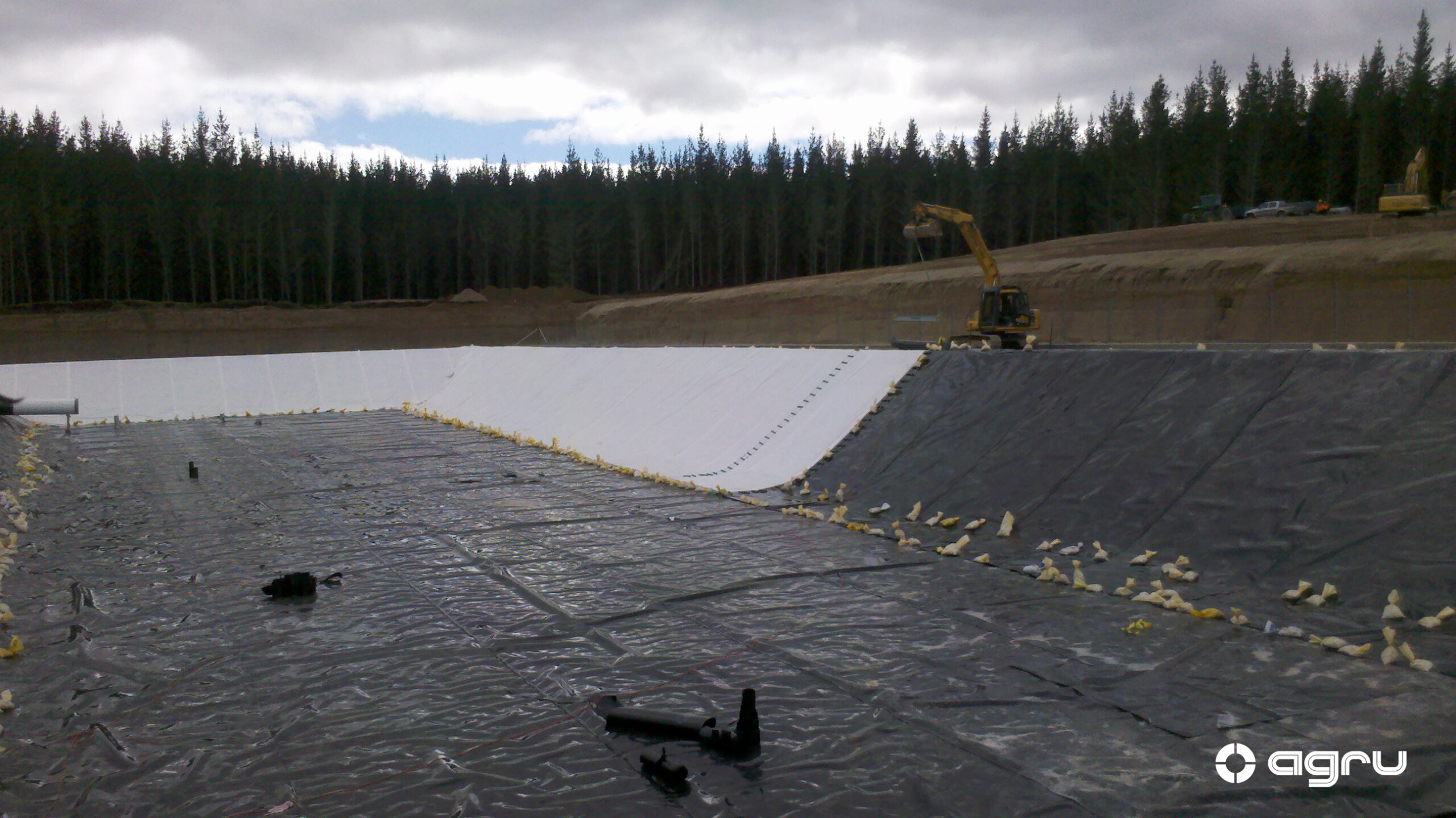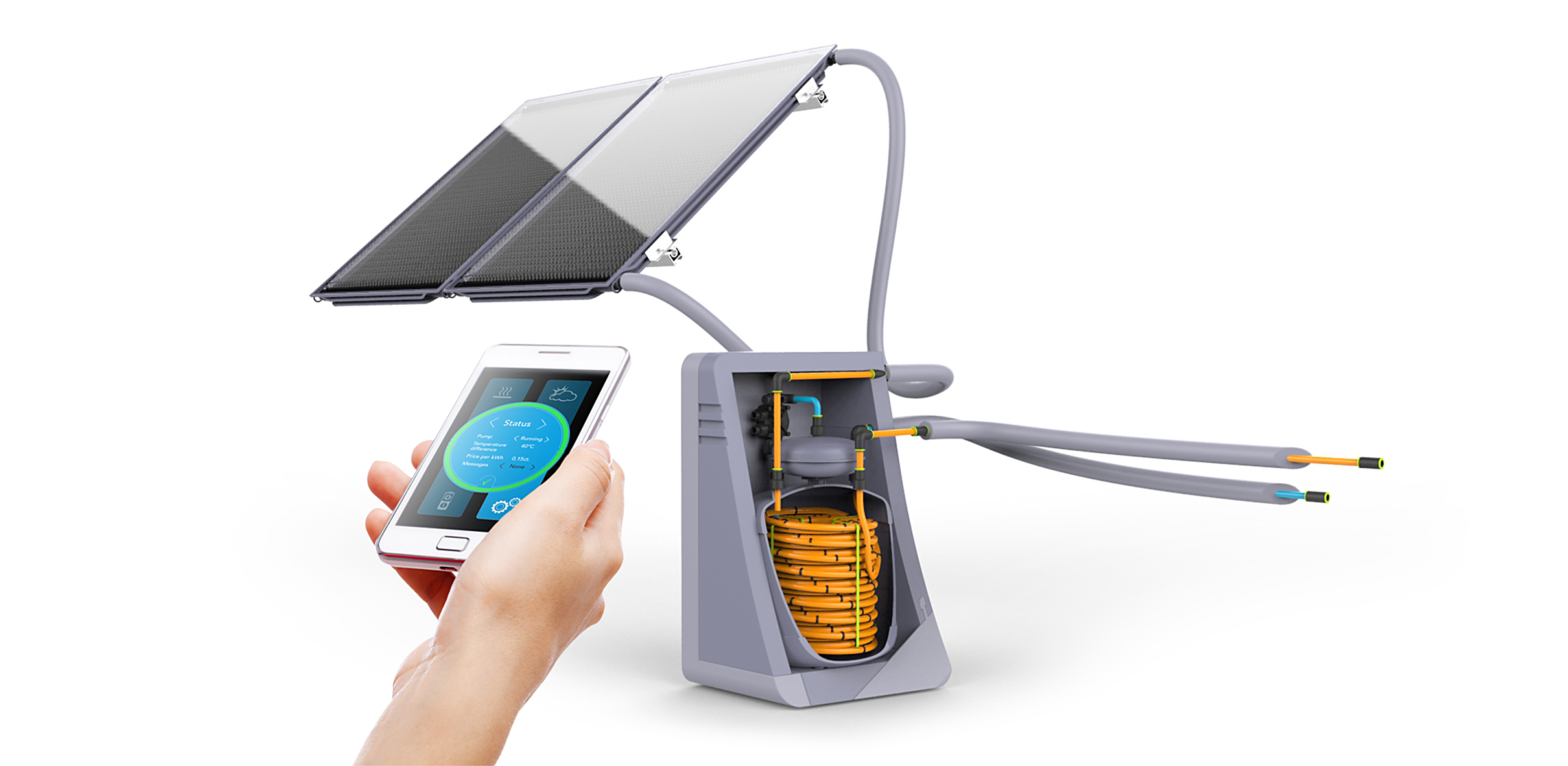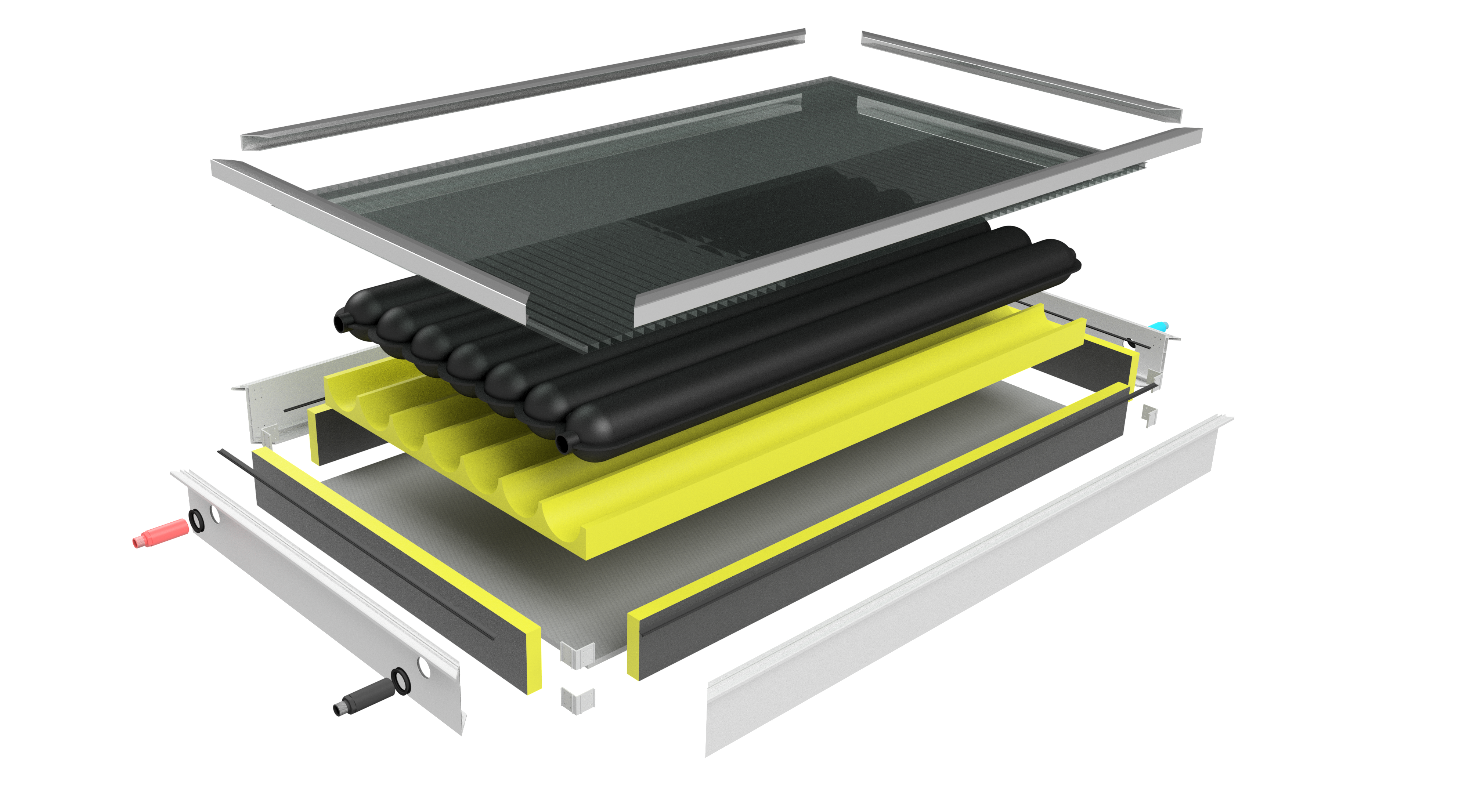SolPol-4/5 Solar-thermal Systems Based on Polymeric Materials: Novel Pumped and Non-Pumped Collector-Systems
Solar-thermal collector systems are currently produced in rather cost-intensive manufacturing processes utilizing a variety of different mostly non-plastics materials. While the world market for non-pumped solar-thermal systems (thermosiphon systems and integrated storage collectors) continuously exhibited extraordinary growth rates over the last ten years, the European solar-thermal market, which is dominated by pumped flat-plate collector systems, was found to stagnate or even shrink over the last five years.
Hence, the overall objective of the present project SolPol-4/5 is to develop market-competitive pumped and non-pumped solar-thermal systems in an all-plastics or a hybrid-material design. These novel systems should exhibit the following key-characteristics:
- high degree of pre-manufactured components and optimized function integration,
- reduced collector weight and ease of installation (plug&function),
- high reliability and long lifetime,
- attractive design and appearance, and
- reduced costs/prices for end-consumers as well as an improved cost/performance ratio and improved eco-efficiency.
In terms of economic and ecological goals the project strives to contribute towards re-stimulating the European and Austrian market deployment for solar-thermal hot water supply and for space heating, while simultaneously significantly reducing greenhouse gas emissions. Furthermore, and simultaneously, the position and competitiveness of Austrian solar-thermal companies should be significantly strengthened.
More specifically, by applying a science-driven approach guided by and based upon strong industrial-technological experience, the project pursues the following 2 major goals:
(1) To conceptually develop, practically build, function-proof and evaluate highly polymer based, pumped collector model systems achieving systems costs reductions by about 50 % compared to current systems.
(2) To develop novel non-pumped, integrated storage collector (ISC) systems in an all-polymeric or a hybrid-material design that combines the attributes of high comfort and high quality/reliability with low-to-moderate costs.
Project Goals and Deliverables
Based on the above descriptions of the current state of technology, the overall objectives, and the major problems to be resolved, SolPol-4/5 pursues the following specific technical, economic and scientific goals:
(1) To conceptually develop, practically build, function-proof and evaluate highly polymer based, pumped collector model systems for domestic hot water (DHW) and space heating (SH) applications in Europe and North America achieving systems costs reductions by about 50 % (i.e., ~500 €/m2) compared to current systems while offering an equivalent lifetime of at least 20 years.
(2) To develop novel non-pumped, integrated storage collector systems in all-polymeric or hybrid design for DHW preparation in sub-tropical and tropical climates, that combine the attributes of high comfort and high quality/reliability with low-to-moderate costs of about 500 to 700 € for a collector system with 2 m2 of collector area and 150 l storage volume along with a guaranteed lifetime of 10 years, and a reduction of the overall mass below 70 kg for ease of transport and installation.
(3) To define a catalogue of required performance profiles for polymeric materials for various collector system designs and climate regions on the level of individual components, to aid material selection and to guide material development efforts throughout the course of the project but also beyond.
(4) To develop novel polymer compounds and semi-finished product types, tailored towards specific applications in various components of pumped and non-pumped systems.
(5) To develop and implement a portfolio of test methods that allow for efficient and reliable material screening and ranking, and for material qualification and durability assessment under various superimposed mechanical, thermal, environmental loading conditions.
Most of the pumped solar-thermal systems built today are installed at the application site in a great variety of systems designs, using collectors provided by solar-thermal collector manufacturers and other components being provided by a large number of different vendors. This not only is a key reason for the high share of installation costs on the total systems costs, it frequently also is the cause of non-optimal systems operation and deficiencies. Hence, referring to the above project goal (1), a key issue in reducing overall systems costs of pumped solar-thermal systems while simultaneously improving reliability and performance will be to develop more standardized systems and systems components with a high degree of prefabrication and function integration, thereby simplifying solar-thermal systems installation on site by means which may best be described as „plug&function” installation capability. Analogous considerations apply, of course, to the already nearly fully integrated non-pumped storage collector systems of project goal (2).
Further cost reductions and performance improvements for solar-thermal systems on the component level may more directly arise from a material switch to polymers. For example, glazed flat plate collectors and vacuum tube collectors are currently manufactured in time-consuming and cost-intensive manufacturing processes requiring different material classes (metals for absorber, trough and frame; inorganic materials for selective absorber coatings, thermal insulation and glazing; and organic materials such as wood or plastics for the frame, the thermal insulation or the sealing). Metals, in particular copper used for absorbers and hydraulic piping, have been subject to significant price increases as a result of a shortage of capacities and resources. Polymeric collectors and polymer piping but also other system components such as storage tanks or heat exchangers based on polymeric materials, will allow for significant cost reductions when taken together and integrated in a proper manner.
To a certain extent (also referring to work in SolPol-1/2 by some of the consortium partners), polymeric materials are already in use for various solar-thermal components. The advantages related to the use of polymers include functional improvements, weight and cost reductions and – last but not least – more freedom in design to meet the aesthetic demands of architects and end-users. Moreover, as a result of their property profile, which may be tailored to specific requirements and applications, together with their low density (light weight), polymeric materials use „less to do more”, thus also contributing to resource preservation (Wallner and Lang, 2005).
Considering all of these aspects, it is imperative to further explore the potential of new materials to continue to develop the solar-thermal market by enhanced technical innovations. Thus, novel polymeric materials and their implementation in solar-thermal systems are increasingly recognized as key technology for the attainment of mid- and long-term development targets of the solar-thermal industry (Weiss and Biermayr, 2009; Fink et al., 2009; Fink and Preis, 2014). The crucial importance of novel material technologies is also recognized by the European Technology Platform on Renewable Heating and Cooling (Stryi-Hipp et al., 2012), and polymer technologies, in particular, are also defined as the key element of future innovations for low-cost solar-thermal systems in the US, as emphasized in a recent report by the National Renewable Energy Laboratory (Hudon et al., 2012).
Reflecting the above goals and the high potential of polymer driven technologies towards meeting these goals, the following main deliverables are expected from the project work.
- For low-cost pumped collector systems (DHW and SH applications):
– Novel types of OHC collectors (max. stagnation temperature 95°C) with high polyolefin content in rigid and/or membrane design, optimized for plug&function capability to the remaining system
– Novel types of collectors in engineering polymer and hybrid design (max. stagnation temperature 130°C) optimized for plug&function capability to the remaining system
– Conception and definition of specific components that allow for a high integration into pre-fabricated.
- For high-quality non-pumped storage collector systems (DHW applications):
– Improved and optimized single-loop integrated storage collector in rigid and flexible polymer-hybrid design
– Novel double-loop systems with integrated heat storage in polymer and hybrid design
- Novel polymeric materials and semi-finished product types for solar-thermal systems:
– High-performance polyolefins with improved high-temperature durability (95 °C)
– Multi-functional master-batches for various solar-thermal systems components
– Advanced multi-layer hybrid films (absorber membrane, flexible pipe, insulation and heat exchanger materials)
– multi-functional or function-integrated material solutions for collector glazings or casings
- Advanced methods for durability testing of specimen and components under superimposed mechanical, thermal and environmental loading:
– Test procedures and test catalogue
Research Program and Methodology
Reflecting the above goals, the research program of SolPol-4/5 has been designed consist of the following 3 work packages (WP). Specific tasks have been allocated to each of these WPs which reflect the scientific approach, the topics of research along with the methodology applied, and the results to be obtained:
WP-01: Low-Cost Pumped Systems
Task 1.1: Systems definition and optimization
Task 1.2: Overheating controlled (OHC) collector with high polyolefin content in
rigid and membrane design
Task 1.3: Drainback collector in rigid all-polymeric and hybrid design
Task 1.4: Conception of specific components, pre-fabricated/highly-integrated hydraulic stations and system integration
Task 1.5: Economic and ecological perspectives
WP-02: High-Quality Non-Pumped Systems
Task 2.1: Single-loop integrated storage collector systems
Task 2.2: Double-loop systems with integrated sensible heat storage
Task 2.3: Double-loop systems with integrated heat storage based on
thermoformed components
Task 2.4: Economic and ecological perspectives
WP-03: Novel Materials and Test Methods
Task 3.1: High performance polyolefins for pressurized absorber applications meeting temperature, water/glycol and water/salt exposure requirements
Task 3.2: High performance polyolefins for liner applications meeting temperature and environmental exposure requirements (water, air, chlorinated water)
Task 3.3: Master-batch development for collector part applications and piping
Task 3.4: Advanced multi-layer hybrid films for collector system applications
(membrane, flexible pipe, insulation and heat exchanger materials)
Task 3.5: Advanced methods for durability testing of specimen and components
under superimposed mechanical, thermal and environmental loading
Reflecting the science-driven approach, in WP-01 and WP-02, theoretical (incl. modelling, simulation, polymer and solar physics) and advanced experimental work are combined
- to establish and describe the performance requirements for solar-thermal systems on various levels from the systems level to the component level to the material level,
- to optimize existing and to develop novel pumped and non-pumped polymer-based solar-thermal systems aiming at high degree of systems integration, installation simplification and thus cost reduction, and
- to deduce material performance requirements on an individual component level as a key pre-requisite to select and characterize proper commercial materials or to develop novel material grades where needed as part of WP-03 along with defining appropriate processing technologies.
In terms of material selection and testing, work on already existing commercial material candidates is directly included in the relevant Tasks of WP-01 and WP-02, whereas development of novel material compounds along with required screening tests is part of WP-03.
Literature:
Fink, C., Müller, T., Weiss, W. (2009). Solarwärme 2020 – Eine Technologie- und Umsetzungsroadmap für Österreich, Berichte aus Energie- und Umweltforschung 17/2009, BMVIT, Wien.
Fink, C., Preis, D. (2014). Roadmap „Solarwärme 2025” – Eine Technologie- un dMarktanalyse mit Handlungsempfehlungen, Berichte aus Energie- und Umweltforschung 42/2014, BMVIT, Wien.
Hudon, K., Merrigan, T., Burch, J., Maguire, J. (2012). Low-Cost Solar Water Heating Research and Development Roadmap, Technical Report NREL/TP-5500-54793, Golden.
Stryi-Hipp, G., Weiss, W., Mugnier, D., Dias, P. (2012). Strategic Research Priorities for Solar Thermal Technology, RHC Renewable Heating&Cooling European Technology Platform, Brussels.
Wallner, G.M., Lang, R.W. (2005). Guest Editorial, Solar Energy, 79, 571-572.
Weiss, W., Biermayr, P (2009). Potential of Solar Thermal in Europe, ESTIF, Brussels.




"Dank der konsequenten Förderung des Klima- und Energiefonds ist es uns gelungen, heimisches Know-how aus Wissenschaft und Wirtschaft zu vereinen. Die innovativen Produkte, die daraus resultieren, beleben nicht nur den Solarmarkt, sondern kommen auch bereits in anderen Branchen erfolgreich zum Einsatz."
– Reinhold W. Lang –
Downloads
Steckbrief
-
Projektnummer84732
-
Koordinator
-
ProjektleitungReinhold W. Lang, solpol@jku.at
-
PartnerAGRU Kunststofftechnik GmbH (AGRU)
ALANOD GmbH & Co. KG (Alanod)
APC Advanced Polymer Compounds (APC)
Borealis AG (Borealis)
Calus GmbH (Calus)
Easol e.U. (Easol)
Gabriel-Chemie Gesellschaft m.b.H. (Gabriel)
GREENoneTEC Solarindustrie GmbH (GoT)
Greiner Technology & Innovation GmbH (GTI)
Lenzing Plastics GmbH & Co. KG (Lenzing)
Sunlumo Technology GmbH (Sunlumo)
Arbeitsgemeinschaft Erneuerbare Energie - Institute for Sustainable Technologies (AEE INTEC)
Johannes Kepler Universität Linz - Institute for Chemical Technology of Organic Materials (JKU-CTO)
Johannes Kepler Universität Linz - Institute for Analytical Chemistry (JKU-IAC)
Johannes Kepler Universität Linz - Institute of Polymer Chemistry (JKU-ICP)
Johannes Kepler Universität Linz - Institute of Polymeric Materials and Testing (JKU-IPMT)
Kunstuniversität Linz - Industrial Design (UFG-ID)
Universität Innsbruck - Chair for Energy-Efficient Building (UIBK-EEB)
-
SchlagwörterErneuerbare Energie, Solarthermie, SolPol
-
FörderprogrammEnergieforschung (e!MISSION)
-
Dauer05.2014 - 04.2018
-
Budget6.600.123 €



